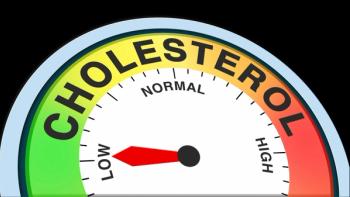
Antidepressant Discontinuation: What the Tertiary Databases and Package Insert Tells You
Discontinuation of antidepressants should take place gradually, as abrupt stoppage or marked reduction in the dosage of an antidepressant is frequently associated with adverse effects (AEs), such as withdrawal symptoms.
Discontinuation of antidepressants should take place gradually, as abrupt stoppage or marked reduction in the dosage of an antidepressant is frequently associated with adverse effects (AEs), such as withdrawal symptoms.1,2 Withdrawal symptoms, manifested by flu-like symptoms, insomnia, nausea, imbalance, “brain zaps,” sensory disturbances, and hyperarousal, usually occur within a few days after discontinuing the medication and may last months without intervention.
The exact incidence of withdrawal symptoms is unknown but may develop in approximately 20%-63% of patients following rapid discontinuation of antidepressants.2,3 In addition to the presence of the unpleasant AEs, withdrawal symptoms can be problematic in potentially leading to misdiagnosing of depression relapse or recurrence.1 Withdrawal symptoms due to antidepressant discontinuation may also be misdiagnosed as severe conditions, such as neurologic conditions, infectious diseases, and AEs of other medications a patient takes.4
Antidepressant discontinuation may occur in various situations, such as when the patient experiences an inadequate treatment response or intolerable AEs from the medications.5 Patients and providers may also consider discontinuing antidepressants following the remission phase of treating major depressive disorder or other psychiatric disorders, as tolerability and long-term AEs of the medications become an important concern.6 Due to the risk of withdrawal symptoms, the American Psychiatric Association and the National Institute for Health and Care Excellence advise careful tapering of the doses over periods of time when discontinuing the antidepressants.1
Therefore, management and prevention of withdrawal symptoms associated with antidepressant discontinuation or dosage reduction is a task that requires a thorough understanding of tapering schedule.
The current recommendations for antidepressant discontinuation recognize that avoiding the symptoms of antidepressant withdrawal is essential; however, uncertainty regarding effective strategies for discontinuation remains.6 According to the American Psychiatric Association, when pharmacotherapy with antidepressants is being discontinued, it is best to taper the medication over the course of several weeks.7
Despite such emphasis on cautious discontinuation, there are no clear tapering recommendations, and common tapering schedules vary anywhere from 4 weeks to several years.4 Additionally, antidepressant discontinuation review articles explicitly state that conflicting opinions exist on the optimum duration and dose reduction of the antidepressants.8-10
Guidance on a reasonable and safe tapering regimen is needed by health care providers who do not routinely engage in structured antidepressant discontinuation. This may be a reason for a pharmacist to seek information from tertiary drug information resources and/or package inserts (PIs).
Primary literature can provide additional information, but access, time, and other constraints limit the usefulness in practice settings. Although patient tapering schedules will still need to be individualized, consistent communication in health information resources is important to provide an initial framework for the process.
When looking at 25 antidepressants that are FDA-approved for depression and available as a single ingredient agent intended for human use, oral/transdermal administration, and currently marketed, it is rather surprising to see how the information on their tapering varies across tertiary drug databases and PIs (Figure 1). Tapering was defined as the gradual discontinuation, decrease, or reduction of a dose over a period of time. We reviewed 4 drug databases: Clinical Pharmacology (CP), Facts and Comparisons (FC), Lexicomp (LC), and Micromedex (MDX).
All of the tertiary databases and PIs contained information on a need for tapering on most antidepressants. However, the information contained in each resource and the location of the information differed.
FC, LC, and MDX included medication discontinuation information in the dosage section, with additional information listed in the adverse events and precautions section. CP listed antidepressant withdrawal information in the adverse events and/or precaution section. The vast majority of PIs listed information in the precaution section rather than the dosing section, and several medications had no information included.
Specific tapering schedules were only provided for 4 of the 25 antidepressant medications (Table 1).11-14 MDX only provided specific tapering information for the bupropion hydrobromide salt form, but not the bupropion hydrochloride salt form.
The PI for both Aplenzin (bupropion hydrobromide) and Wellbutrin (bupropion hydrochloride) provided specific tapering information. Also, the PI for paroxetine (Paxil) provided discontinuation tapering information for generalized anxiety disorder and post-traumatic stress disorder, but not for depression.
For most other antidepressants, FC and LC provided general information on a gradual taper over 2 to 4 weeks when treatment lasted for more than 3 weeks. These recommendations were based on information for the antidepressant class and not specific to individual medications.
CP listed the general recommendation to taper medications to prevent withdrawal symptoms for most of the medications reviewed but did not suggest a timeline for discontinuation. MDX contained general information about discontinuation tapering for patients on long-term antidepressant therapy in the administration section, but like other resources, did not provide a duration or timeline.
Inconsistent information on antidepressant discontinuation regimens can lead to suboptimal tapering management and emergence of withdrawal symptoms. There are limited reviews and prospective randomized controlled trials exploring antidepressant discontinuation regimens, which may account for the lack of specific recommendation in tertiary drug databases and PIs.
Much of the literature that discusses proper tapering of antidepressants provides recommendations based on age or comorbidities, which limits the generalizability of the information.15-18 Tertiary drug databases and package inserts are commonly accessed resources for a variety of health care professionals, and there may be an inherent expectation to find specific recommendations and dosing information for antidepressant discontinuation.
Currently, there is no definitive discontinuation information available among the tertiary drug databases and PIs for many of the antidepressants that are readily used to treat depression. Additionally, the difference in location of such information depending on the resource used may pose challenges for pharmacists when trying to provide an appropriate recommendation.
Many health care settings, specifically community pharmacies, may only have access to 1 database. Due to the inconsistency of information across databases, access to specific tapering recommendations may not be available even if they are provided only on certain databases.
For example, if a pharmacist in a community setting only has access to CP, they would be able to use specific tapering information on venlafaxine and vortioxetine but would not have access to the tapering recommendations for bupropion hydrobromide or vilazodone. This makes determining an appropriate discontinuation schedule a challenge for pharmacists who do not routinely work with antidepressants.
The inconsistency of discontinuation recommendations also poses a problem with medications that may be more likely to cause withdrawal symptoms. For example, immediate-release venlafaxine and paroxetine both have relatively short half-lives in comparison to other antidepressants, at 5-13 hours and 21 hours, respectively.4 A shorter half-life increases the risk of emerging withdrawal symptoms.4 Information inconsistency persists even with these higher risk antidepressants. Discontinuation tapering should be closely monitored for these medications, as patients taking these medications may have a higher chance of experiencing withdrawal symptoms.
Review articles and editorials are available through medical journals that provide recommendations and strategies for tapering antidepressants, but these are not always easily and readily accessible to all health care providers.4,19-21 As a result, pharmacists may need to consult primary literature or other resources, including other experts in pharmacy or psychiatry, in the absence of consistent and specific guidance.
REFERENCES
1. Maund E, Stuart B, Moore M, et al. Managing antidepressant discontinuation: A systematic review. Ann Fam Med. 2019;17(1):52-60. doi:10.1370/afm.2336.
2. Gabriel M, Sharma V. Antidepressant discontinuation syndrome. CMAJ. 2017;189(21):E747. doi:10.1503/cmaj.160991.
3. Read J, Gee A, Diggle J, Butler H. Staying on, and coming off, antidepressants: The experiences of 752 UK adults. Addictive Behaviors. 2019;88:82-85. doi:10.1016/j.addbeh.2018.08.021.
4. Warner CH, Bobo W, Warner C, Reid S, Rachal J. Antidepressant discontinuation syndrome. Am Fam Physician. 2006;74(3):449—456.
5. Keks N, Hope J, Keogh S. Switching and stopping antidepressants. Aust Prescr. 2016;39(3):76-83. doi:10.18773/austprescr.2016.039.
6. Malhi GS, Hamilton A, Morris G, Das P, Outhred T. Optimisation of adherence and discontinuation practices for maintenance antidepressant therapy. Aust N Z J Psychiatry. 2017;51(4):403-405. doi:10.1177/0004867417700987.
7. Gelenberg AJ, Marlene Freeman CP, Markowitz JC, et al. Practice Guidelines for the Treatment of Patients with Major Depressive Disorder Third Edition.; 2010. http://www.psychiatryonline.com/pracGuide/pracGuideTopic_7.aspx. Accessed March 17, 2020.
8. Ogle NR, Akkerman SR. Guidance for the discontinuation or switching of antidepressant therapies in adults. Journal of Pharmacy Practice. 2013;26(4):389-396. doi:10.1177/0897190012467210.
9. Haddad PM, Anderson IM. Recognising and managing antidepressant discontinuation symptoms. Advances in Psychiatric Treatment. 2007;13(6):447-457. doi:10.1192/apt.bp.105.001966.
10. Peter C. Groot & Jim van Os (2018) Antidepressant tapering strips to help people come off medication more safely, Psychosis, 10:2, 142-145, doi: 10.1080/17522439.2018.1469163.
11. TRINTELLIX- vortioxetine tablet, film coated. DailyMed. https://dailymed.nlm.nih.gov/dailymed/drugInfo.cfm?setid=1a5b68e2-14d0-419d-9ec6-1ca97145e838. Updated July 26, 2019. Accessed April 13, 2020.
12. VIIBRYD- vilazodone hydrochloride tablet VIIBRYD- vilazodone hydrochloride kit. DailyMed. https://dailymed.nlm.nih.gov/dailymed/drugInfo.cfm?setid=4c55ccfb-c4cf-11df-851a-0800200c9a66. Updated January 31, 2020. Accessed April 13, 2020.
13. APLENZIN- bupropion hydrobromide tablet, extended release. DailyMed. https://dailymed.nlm.nih.gov/dailymed/drugInfo.cfm?setid=6494d2d9-0ce4-4126-b1c7-49684395942b. Updated May 4, 2017. Accessed April 13, 2020.
14. EFFEXOR XR- venlafaxine hydrochloride capsule, extended release. DailyMed. https://dailymed.nlm.nih.gov/dailymed/drugInfo.cfm?setid=53c3e7ac-1852-4d70-d2b6-4fca819acf26. Updated November 19, 2019. Accessed April 13, 2020.
15. Kok RM, Reynolds CF 3rd. Management of Depression in Older Adults: A Review. JAMA. 2017;317(20):2114—2122. doi:10.1001/jama.2017.5706.
16. Locke AB, Kirst N, Shultz CG. Diagnosis and management of generalized anxiety disorder and panic disorder in adults. Am Fam Physician. 2015;91(9):617—624.
17. Gadzhanova S, Roughead EE, Pont LG. Antidepressant switching patterns in the elderly. Int Psychogeriatr. 2018;30(9):1365—1374. doi:10.1017/S1041610217002964.
18. Alexopoulos GS, Streim J, Carpenter D, Docherty JP; Expert Consensus Panel for Using Antipsychotic Drugs in Older Patients. Using antipsychotic agents in older patients. J Clin Psychiatry. 2004;65 Suppl 2:5—104.
19. Wilson E, Lader M. A review of the management of antidepressant discontinuation symptoms. Ther Adv Psychopharmacol. 2015;5(6):357—368. doi:10.1177/2045125315612334.
20. Phelps J. Tapering antidepressants: is 3 months slow enough? Medical hypotheses. 2011;77(6):1006-1008. doi:10.1016/j.mehy.2011.08.035.
21. Lejoyeux, M., & Adès, J. (1997). Antidepressant discontinuation: A review of the literature. The Journal of Clinical Psychiatry, 58(Suppl 7), 11—16.
Newsletter
Stay informed on drug updates, treatment guidelines, and pharmacy practice trends—subscribe to Pharmacy Times for weekly clinical insights.


















































































































































































































